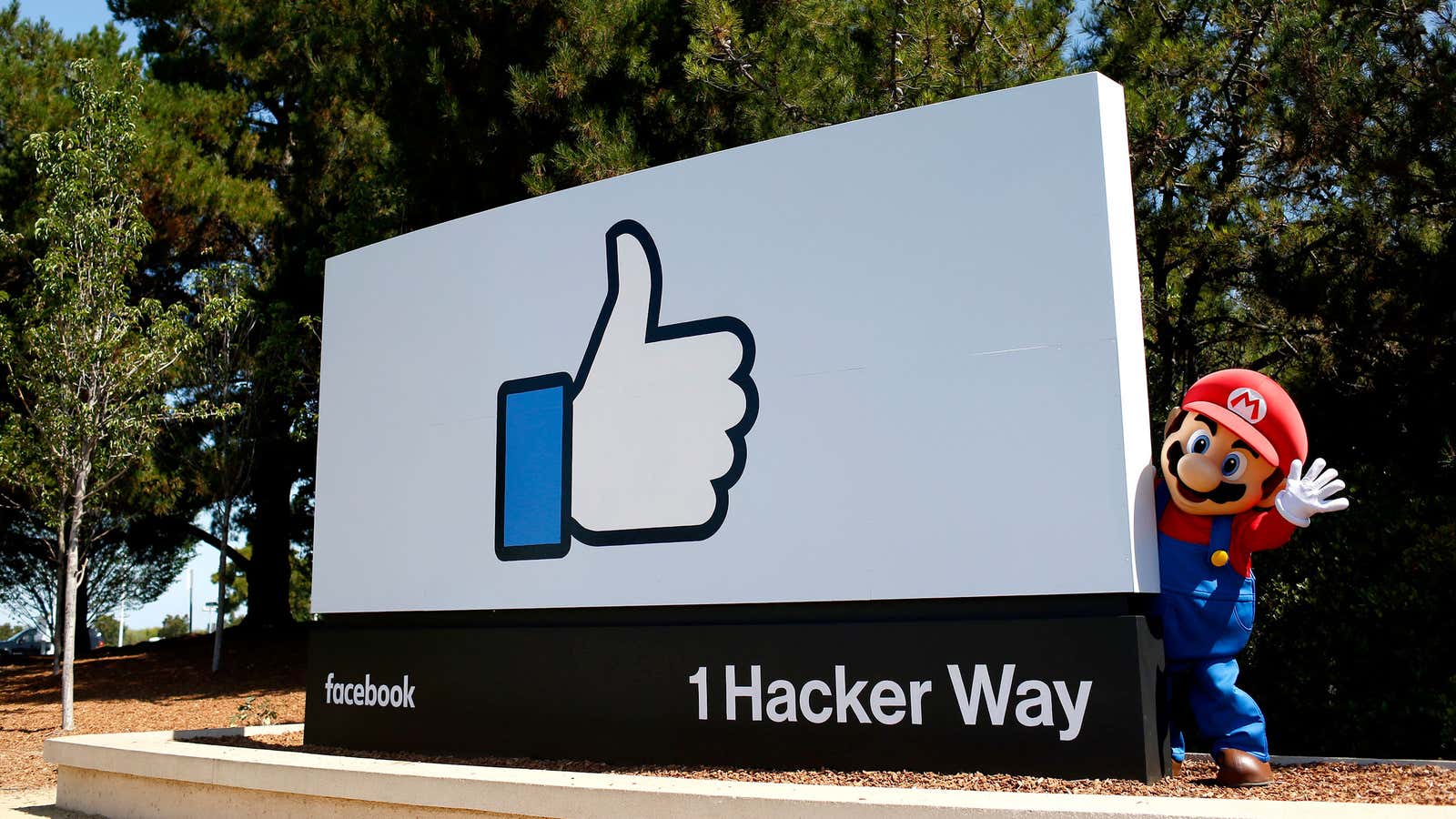For months, we’ve known that Facebook was testing a set of emoji responses to supplement its ubiquitous “like” button. When Facebook CEO Mark Zuckerberg disclosed the development in September, he said that “what [users] really want is the ability to express empathy.”
While it may feel inappropriate to hit a thumbs-up icon in response to a sad status update or a news article about a tragedy, that wasn’t Facebook’s only motivation for the change. In a call with investors on Jan. 27, Zuckerberg revealed the actual reason behind the emoji responses: 💖,😆,😊,😮,😥, and 😡.
In short: He was afraid users would stop sharing content.
The philosophy behind it is that when you only have a “like” button, if you share a sad piece of content or something that makes you angry, people may not have the tool to react to it. And therefore, over time the community feels less comfortable sharing that content on Facebook. We want people to be able to share all of the things that are meaningful to them, not just the things that are happy and that people are going to “like” when they see it.
With the new set of buttons, the end goal is to “increase engagement and sharing and openness and all of the things that we care about,” he added. Facebook, of course, cares about engaged users because it also cares about showing them ads—because it also cares about its bottom line.
The emoji reactions are currently being tested in a “handful of countries,” said Zuckerberg. The challenge is to make them as simple as the “like” button. As such, Facebook is currently tweaking the design, specifically how users interact with it, before rolling out the new buttons across all platforms and around the globe.
